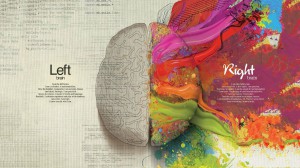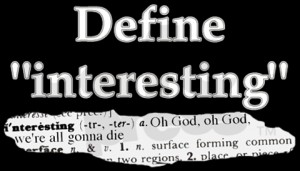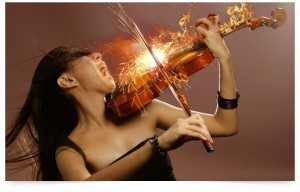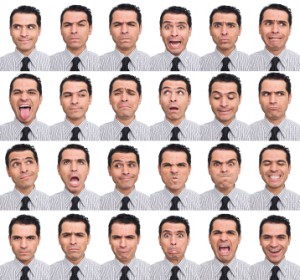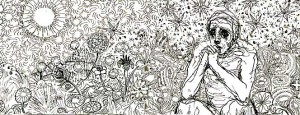I guess I would say that there are three types of people when it comes to horror films; there are those who hate watching horror films, those who don’t mind watching horror films, and those who enjoy watching horror films. Personally, I’m not a fan of horror films and out of my 20 years of life, I would say that I’ve watched maybe about 10 horror films. I definitely believe in spirits, ghosts, and just all things paranormal therefore I try not to watch any films that contain any of these topics. Even though horror films aren’t only exclusive to the paranormal “world”, I don’t enjoy being scared at all but that’s just me. I am not alone though, in fact, horror films tend to gross far less money than other mainstream genres (Evan 2012). With that said, horror films are still around which means that there are people who enjoy watching horror films and I never understood why, until now.
In the article, Why do we watch scary movies the author includes quotes from Stephen King whom is a very infamous for writing award winning horror books as well as suspense, science fiction, and fantasy. One of the quotes that caught my eye stated that, “We are drawn to things that stimulate our emotions and particularly stimulate them without any adverse consequences to us” (Evans 2012). This made me understand possibly why people like horror films. Some people, not like me, are very curious about the paranormal realm and things that society leads us to believe aren’t true. Horror films allows people to get their emotions and curiosity about horrific things stimulated without actually having to experience them in real life. This is similar to an idea that Carroll had talked about in this unit’s reading. Carroll stated that, “Thus, we are attracted to, and many of us seek out, horror fictions of this sort despite that fact that they provoke disgust, because that is required for the pleasure involved in engaging our curiosity in the unknown and it into the processes of revelation, ratiocination, etc.” (2002). This really made sense to me because as human beings we are naturally curious about things we do not know. For example, if someone knows something that you don’t know, like a secret, it is likely that you will be curious to what it is that you don’t know.
Another thing that I’d like to touch base on is that everyone is unique and handles their emotions differently. Not everyone is going to be a “scaredy-cat” like me; some people may enjoy the experience of emotions that horror films give them. In this unit’s reading Carroll explains that there are pleasures that may arise from watching horror films (2002). Which is similar to an idea that Evan’s had quoted from Norman Holland that said, “A movie is just like any experience. It may or may not have any positive effect at all or any effect at all” (2012). I guess, it really just depends on the viewer whether they receive pleasure from watching horror films or not. I receive pleasure from watching genres like comedy, action, or romantic dramas.
These pleasures that we get from watching movies arise from the aesthetic qualities within the films, and every genre has them. In the book, The Horror Sensorium Ndalianis states “recognize the diverse nature of that experience from the sensory reactions and impulses to perceptions that activate cognitive processes of understanding and interpretation” (2012). These reactions that we get from watching any type of films are results from the cognitive processes that we use to understand and interpret the movies aesthetic qualities. For example, some of the aesthetic qualities that we covered this week include diegetic sound, non-diegetic sound, and mise-en-scene. Diegetic sound are sounds within the film, where the source of the sound is visible in the frame. This may include anything from character’s dialogue to sounds given off by objects. Non-diegetic sounds are sounds where the source of the sound in either not visible within the frame or not implied within the present action of the film. Some examples of non-diegetic sound that Ndalianis talked about in her book include the ominous background music that every horror film contains to set the mood of the scene, those creepy sound effects that the director’s add to scenes for dramatic effect in hopes of scaring the audience, and it could just be the narrator’s commentary that explains important information that may hold the plot together (2012). Moreover, mise-en-scene is things behind the scene, aspects that most people overlook. This may include lighting, framing, production, or actor’s performance. These all contribute to create the aesthetic reaction we get from watching films. It’s very interesting to believe that we can go through or get all these reactions through just sight. Ndalinani explains that, “our perception of onscreen kinetics has the potential to give way to a ‘type of kinesthetics’ that activates the senses and creates for the ‘viewer’ an offscreen response to the onscreen space” (2012).
References
Carroll, N. (2002). Why Horror?. In Neill, A. & Riley, A. (Eds.) Arguing About Art: Contemporary Philosophical Debates (2nd ed., pp. 275-294). New York, NY: Routledge.
Evans, Whitney, (Oct. 25 2012). Why do we watch scary movies?. [ONLINE] Available at: http://www.deseretnews.com/article/765613770/Why-do-we-watch-scary-movies.html. [Last Accessed May 6, 2014].
Ndalianis, A. (2012). The Horror Sensorium: Media and the Senses. Retrieved May 9, 2014, from http://reader.eblib.com.libproxy.uoregon.edu/(S(gq4l4k5lufrahxxe5oyqh5qq))/Reader.aspx?p=1034991&o=1338&u=ScbbvwZ%2fU0nhOxo25VSQ1A%3d%3d&t=1399663404&h=C98CD1E12EBE3E846CCB55FACD972A8D198573D3&s=23115803&ut=4509&pg=1&r=img&c=872&pat=n&cms=2#

